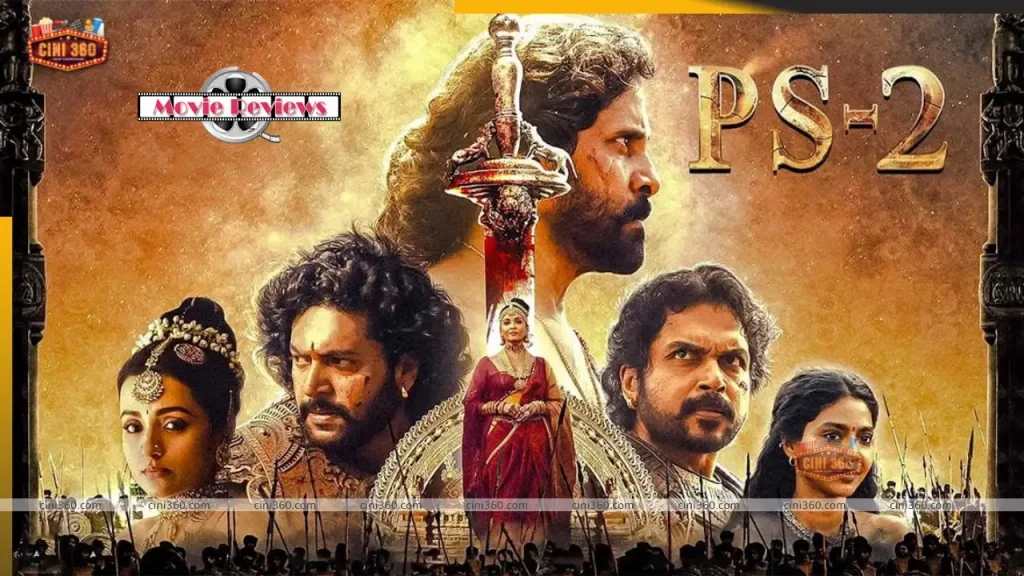Ponniyin Selvan: Part 2 Movie Synopsis: There is a plan in motion to assassinate the monarch and the two Chola dynasty princes on the same day. Can the Pandiya rebels, who are being led by the vengeful Nandhini, withstand the wrath of the Cholas?
Ponniyin Selvan: Part 2 Movie Review: Ponniyin Selvan: Part 2 by Mani Ratnam continues the story’s ill-fated romance between crown prince Aaditha Karikalan (Vikram) and Nandhini (Aishwarya Rai Bachchan), which was put in motion in the previous part. The director of PS2 shows us the blossoming of love between a prince and an orphan girl, as well as the heartache it leaves in the wake of them being separated by factors beyond their control, without saying too much through dialogue. PS2 opens with a prelude that depicts their romance when they were young.
In fact, up until the story’s finale, this doomed relationship keeps the story’s suspense high and propels the protagonists to take actions that have broad repercussions. Karikalan is unwilling to decline an invitation to the Kadambur palace, where his own chieftains conspired to assassinate him, although seeing that doing so could be foolish. His sister, Princess Kundhavai (Trisha), is motivated by the intrigue surrounding Nandhini’s ancestry. In the end, the Pandiya rebels, who have sworn an oath to avenge Karikalan, whose romance resulted in the assassination of their monarch, are repelled by the youthful prince Arulmozhi Varman (Jayam Ravi).
The film continues with the quick narrative we received in the second half of the previous movie up to the interval, progressing more like a swashbuckler. We see Vandhiyathevan’s (Karthi) brave attempts to stop the murder of Arulmozhi, who is receiving medical treatment in a monastery. We see a scorching love scene between Vandhiyathevan and Kundhavai, a beautiful reunion of the siblings, and an exciting pre-interval action scene that is a masterpiece in how to film mayhem while maintaining spatial clarity.
The second half is primarily focused on Karikalan’s fate, and Mani Ratnam makes the eagerly awaited scene between Karikalan and Nandhini so terrifying and painful that we briefly lose track of the other characters. The performances by Vikram and Aishwarya in these scenes are excellent. Cinematographer Ravi Varman shot most of them in close-ups, which further emphasizes how vulnerable their characters are.
To be truthful, this emotional high has a significant influence on the climax since the events that occur after a major character dies fall short of the tension and drama the story had built up to that point. The proceedings also have a somewhat dismal tone due to how serious they are, which is unusual for historical epics, especially in the post-Baahubali era. Mani Ratnam adheres more closely to the spirit of Kalki’s writings, a fictionalized portrayal of historical figures with a strong emphasis on interpersonal drama, than those films, which were about superhuman, fictitious heroes. Although the action takes place in a palace, the grandeur is primarily created by the feelings of the people who inhabit it. Mani Ratnam appears to be aware of this as well since he chooses to include a battle scene at the conclusion to give viewers an immediate adrenaline rush. However, this climax lacks a solid emotional foundation and magnificent visual effects that would actually leave us feeling good.
The climax, though, is where everything fall flat the most. While the writers (Mani Ratnam, Jeyamohan, and Kumaravel) shrewdly give us a more agreeable twist, they fall short with the speech that Arulmozhi delivers in the end while making the ultimate sacrifice that makes him the titular hero of this sprawling epic. Even in Kalki’s book, we get a rather low-key ending with one too many twists.




